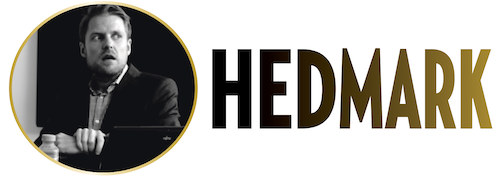
THE STORY OF THE STRANGEST PASSION THE WORLD HAS EVER KNOWN!

Nosferatu (1922) was an obvious, unsanctioned adaptation of Bram Stoker’s classic novel ”Dracula” and the author’s widow successfully sued the German filmmakers. When Hollywood producer Carl Laemmle, Jr. became interested in adapting the novel for U.S. audiences, he made sure to secure the rights, but still looked to Nosferatu for inspiration. There had been other horror films made in Hollywood during the silent era, but making a scary talkie at a time when the new phenomenon sometimes had audiences laughing because of how silly voices and noises might come across seemed challenging.
There is no music score and much of the action here is in fact silent. Unlike Frankenstein that same year, which was also produced by Laemmle, Dracula finds a better balance in its sound.
Arriving in Transylvania
A carriage is headed for a small village in Transylvania, carrying among them a solicitor, Renfield (Dwight Frye). When he tells a local villager during a stop that he’s traveling to a castle owned by a count Dracula, the villager is frightened and tells him not to go there. Undeterred but feeling uneasy, Renfield is picked up by a coach that Dracula has sent. When they arrive at the intimidating castle, Renfield discovers that the carriage is not really driven by anyone… but soon Dracula (Bela Lugosi) emerges and bids him welcome. After presenting the count papers that will allow him to lease a mansion in London, Renfield falls under Dracula’s spell. Just a few days later, the count and his three wives are traveling by boat to England, with a deranged Renfield guarding the coffins where they sleep…
Moving from silents to sound
Laemmle, Jr. hired Tod Browning to direct what would become his most famous movie, even though the filmmaker never really felt at ease moving from silents to sound. However, Browning had made several thrillers with Lon Chaney, including London After Midnight (1927), a horror mystery that has become one of the most famous ”lost” films from the era.
Both in Transylvania and London, light and darkness, shadows and fog, are used to set the mood for Dracula’s influence on his surroundings.
At the time, the Hungarian-born Bela Lugosi was starring in a play based on Stoker’s ”Dracula” and was hired to repeat his performance as the blood-sucking vampire for the big screen. The part became Lugosi’s huge breakthrough and he’s so effective that after this it became impossible to see him as anything but Dracula. The movie’s opening is mesmerizing, as we and Renfield are introduced to the count in his castle. So many details here have elevated Stoker’s myth – from the vampire’s cape, the way he talks, what the castle looks like with its coffins and spiderwebs, how Renfield is portrayed and how Dracula’s hypnotic eyes are highlighted. Cinematographer Karl Freund, who went on to direct The Mummy the following year and understood the language of horror as well as Browning, is said to have played a huge part during the making of the film. Both in Transylvania and London, light and darkness, shadows and fog, are used to set the mood for Dracula’s influence on his surroundings.
Lugosi is fascinating whenever he makes an appearance; just the studied way he slowly delivers his lines, as horrifying jokes with punchlines, grabs one’s immediate attention. The rest of the cast fall under his shadow, as they are supposed to, but Frye deserves to be mentioned; his insane laugh is very enjoyable.
Dracula was shot in the daytime, and a Spanish-speaking version (using the same sets and costumes) at night. This was common in the early days of sound pictures. Fans of both movies will always argue which version is the best. Now there’s a fun game for long, dark nights when the children of the night make music outside your door.
Dracula 1931-U.S. 75 min. B/W. Produced by Tod Browning, Carl Laemmle, Jr. Directed by Tod Browning. Screenplay: Garrett Fort. Novel: Bram Stoker. Play: Hamilton Deane, John L. Balderston. Cinematography: Karl Freund. Cast: Bela Lugosi (Dracula), David Manners (John Harker), Helen Chandler (Mina Seward), Dwight Frye, Edward Van Sloan, Herbert Bunston… Carla Laemmle.
Trivia: Conrad Veidt, Lon Chaney and Paul Muni were considered as Dracula. Rereleased in the 1990s with a music score by Philip Glass. Followed by Dracula’s Daughter (1936). The play was also filmed as Dracula (1979).
Quote: “I never drink… wine.” (Lugosi)
Last word: “If Count Dracula is not particularly chatty, he presents other difficulties. I find that it requires time and meditation to catch the mood of the character; each performance must be approached with some care. The result is that one doesn’t weary of the part. I am looking forward to the screen production which is being planned by Universal. As you know, [the play] represents but a small portion of the story as outlined in the Bram Stoker novel.” (Lugosi interviewed in 1930, The Oakland Tribune)
